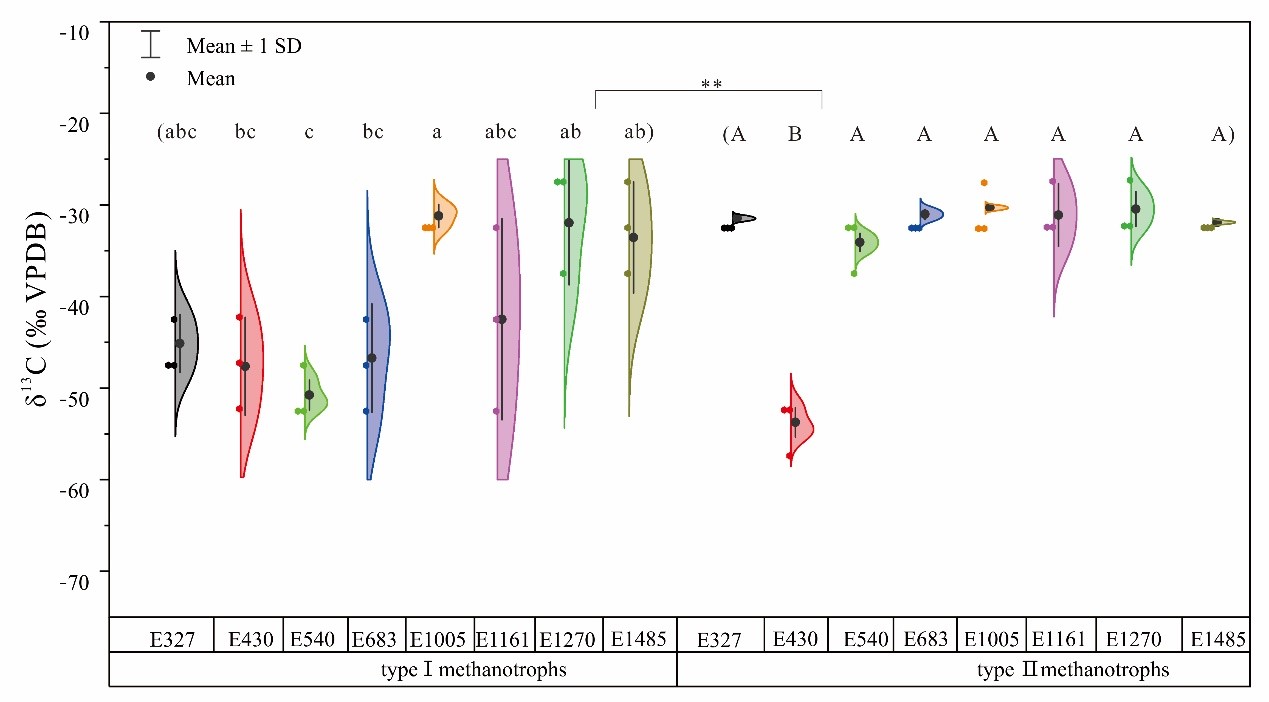Recently, the project team of Alliance of International Science Organizations (ANSO)-Chinese Academy of Sciences (CAS) Research Project entitled “International Wetlands Research League” (ANSO-PA-2020-14) has made great progress on the research of the altitudinal pattern in concentration and carbon isotope composition of methanotroph biomarkers in peatlands. The research paper, one of the major outcomes, has been published on Frontiers in Microbiology.
Peatlands are one of the largest natural sources of CH4 emissions into the atmosphere. Even a very small change in CH4 emissions in peatlands will have a strong impact on the trajectory of future global climate change. As the only biological sink of CH4, the methanotrophs use CH4 as the source of carbon and energy, so that the largest part of CH4 formed in peatland ecosystems is recycled and does not reach the atmosphere.
Understanding the biogeochemical processes mediated by methanotrophs in peatlands is the key in predicting future climate change. Methanotrophs can be divided into two groups based on differences in phenotypic, chemotaxonomic classifications, and genotypic characteristics, the metabolic characteristics of type I and type II methanotrophs might have difference.
However, little is known about the abundance and the metabolic characteristics of type I and type II methanotrophs. In response to this problem, Prof. Ming Jiang and his team investigated the altitudinal pattern of the abundance and the metabolic characteristics of type I and type II methanotrophs in peatlands by combined the phospholipid fatty acids and the stable carbon isotope analysis.
The driving factors that affected the microbial abundance and metabolic characteristics were analyzed. This research suggested that the abundance of type I and type II methanotrophs had opposite trends along the altitude gradient, and carbon isotopic composition showed a significant difference. The nutrient status including TN, TP and DOC was the key factor affecting the difference of abundance and carbon isotopic composition.
This study highlights the difference in the concentration and carbon source utilization of type I and type II methanotrophic groups along the altitude gradient, and enhances our understanding of the metabolic process of methane mediated by methanotrophs and its impact on carbon-sink function in northern peatlands.
This work was made possible by the support of ANSO and through the cooperation with the Institute of Pacific Geography, Russian Academy of Sciences, Romania Danube Delta Institute, North Dakota State University, USGS Wetland and Aquatic Research Center. This research has also greatly benefitted from the China-Russia joint survey on peatlands in permafrost regions of Heilongjiang Basin and the China-US joint survey on peatlands in permafrost regions of Alaska. This research is also supported by the National Natural Science Foundation of China (U19A2042) and the Youth Innovation Promotion Association CAS (2019234).

Fig.1 The altitudinal pattern in concentrations of type Ⅰ and type Ⅱ methanotroph biomarkers in peatlands